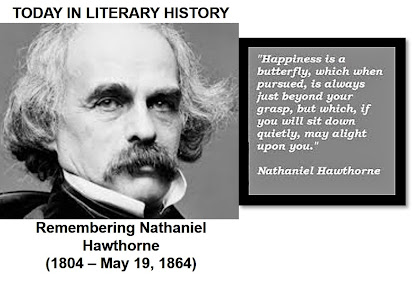You probably read his most successful book in High School:
The Scarlet Letter.
The Scarlet Letter.
Much of Hawthorne's writing centers on New England, many works featuring moral allegories with a Puritan inspiration. His fiction works are considered part of the Romantic movement and, more specifically: Dark Romanticism. His themes often center on the inherent evil and sin of humanity, and his works frequently have moral messages and deep psychological complexity.
Hawthorne's published works include novels, short stories, and a biography of his friend Franklin Pierce.
He was born in 1804 in Salem, Massachusetts, to Nathaniel Hathorne and the former Elizabeth Clarke Manning. His ancestors include John Hathorne, the only judge involved in the Salem witch trials who never repented of his actions. Nathaniel later added a "w" to make his name "Hawthorne" in order to hide this relation.
He entered Bowdoin College in 1821, was elected to Phi Beta Kappa in 1824, and graduated in 1825. Hawthorne published his first work, a novel titled Fanshawe, in 1828; he later tried to suppress it, feeling it was not equal to the standard of his later work.
Hawthorne's works belong to romanticism or, more specifically, dark romanticism, cautionary tales that suggest that guilt, sin, and evil are the most inherent natural qualities of humanity.
Many of his works are inspired by Puritan New England, combining historical romance loaded with symbolism and deep psychological themes, bordering on surrealism.
His depictions of the past are a version of historical fiction used only as a vehicle to express common themes of ancestral sin, guilt and retribution. His later writings also reflect his negative view of the Transcendentalism movement.
The Scarlet Letter
One of the first mass-produced books in America, it sold 2,500 volumes within ten days and earned Hawthorne $1,500 over 14 years.
Hawthorne's The House of the Seven Gables (1851), which poet and critic James Russell Lowell said was better than The Scarlet Letter and called "the most valuable contribution to New England history that has been made"
“Building Your Great Collection One Fine Book at a Time”
Check us out at BlindHorseBooks.com









Comments
Post a Comment